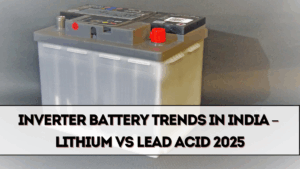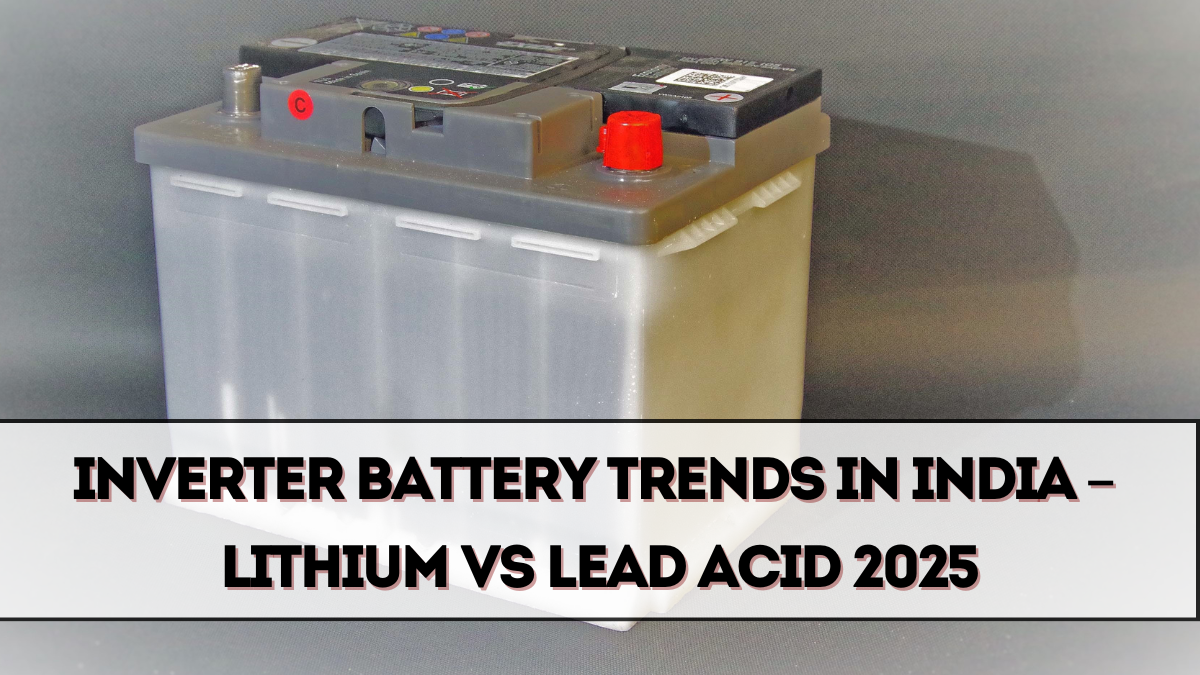Power backup solutions have become an essential part of Indian households and businesses. With frequent power cuts in semi-urban and rural areas, and rising demand for uninterrupted electricity in urban centers, inverter batteries are witnessing significant growth in 2025. Among the various options available, the debate of Lithium vs Lead Acid continues to dominate the Inverter Battery Trends 2025. This article explores the current market scenario, technological advancements, and consumer preferences shaping the inverter battery industry in India.

Rising Demand for Inverter Batteries in 2025
India’s increasing dependence on electricity for both domestic and industrial use has pushed the demand for reliable backup solutions. Factors contributing to this surge include:
-
Frequent Power Outages: Still common in rural and tier-2 cities.
-
Growing Urbanization: Expanding residential and commercial spaces require stable power.
-
Digital Lifestyle: Work-from-home setups, appliances, and gadgets need uninterrupted electricity.
-
Government Initiatives: Subsidies on clean energy and support for modern storage solutions.
This rising demand is fueling innovations and competition in the inverter battery segment.
Lead Acid Batteries – Traditional Powerhouses
Lead acid batteries have been the dominant choice for decades due to their affordability and availability. Their characteristics include:
-
Low Initial Cost: Cheaper to purchase compared to lithium batteries.
-
Widespread Service Network: Easy availability of service centers and technicians.
-
Multiple Variants: Flat plate and tubular batteries cater to different needs.
-
Recyclability: Lead acid batteries are recyclable, contributing to a circular economy.
However, drawbacks include shorter lifespan, bulky size, high maintenance, and slower charging times.
Lithium Batteries – The Modern Alternative
Lithium-ion batteries are rapidly emerging as the future of inverter technology. Their popularity in 2025 is driven by:
-
Longer Lifespan: Lasts 8–10 years compared to 3–5 years for lead acid.
-
Compact Design: Smaller, lighter, and more energy-dense.
-
Fast Charging: Charges up to three times faster than lead acid batteries.
-
Low Maintenance: No need for frequent water refilling or servicing.
-
Eco-Friendly: Lower carbon footprint and energy-efficient.
The higher upfront cost remains a challenge, but long-term savings and durability make lithium batteries increasingly attractive.
Lithium vs Lead Acid – A Side-by-Side Comparison
| Feature | Lead Acid Battery | Lithium Battery |
|---|---|---|
| Cost | Low upfront, higher long-term cost | High upfront, lower long-term cost |
| Lifespan | 3–5 years | 8–10 years |
| Maintenance | Regular refilling & servicing | Minimal maintenance |
| Charging Time | 6–10 hours | 2–4 hours |
| Size & Weight | Bulky and heavy | Compact and lightweight |
| Eco-Friendliness | Moderate (recyclable but polluting) | High (energy efficient, eco-friendly) |
This table highlights why many consumers are shifting from lead acid to lithium, especially in urban areas.
Market Trends in 2025
The Inverter Battery Trends 2025 reveal some important shifts in the Indian market:
-
Urban Households: Increasing preference for lithium batteries due to compact design and efficiency.
-
Rural Areas: Lead acid remains dominant because of lower cost and easier repair availability.
-
Hybrid Models: Manufacturers are launching hybrid solutions combining the strengths of both.
-
Green Energy Integration: Lithium batteries are being paired with solar inverters for sustainable power backup.
-
Government Support: Incentives for eco-friendly batteries are driving demand for lithium models.
This dual-track growth reflects India’s diverse consumer base and economic realities.
Leading Brands in the Market
Several companies are leading the inverter battery segment in 2025:
-
Exide Industries: Strong presence in lead acid, expanding lithium portfolio.
-
Luminous Power Technologies: Known for innovative inverter solutions, including solar-compatible batteries.
-
Amara Raja Batteries: Focused on research and development of advanced lithium storage.
-
Okaya Power Group: Offering eco-friendly inverter batteries at competitive prices.
-
New Entrants: Startups introducing smart, IoT-enabled battery solutions.
These players are setting the tone for future competition and innovation.
Benefits for Consumers
The growth in inverter battery technologies benefits Indian consumers in multiple ways:
-
More Choices: Availability of both traditional and modern options.
-
Better Reliability: Improved power backup for homes and businesses.
-
Eco-Conscious Living: Access to cleaner, sustainable energy solutions.
-
Long-Term Savings: Though costly upfront, lithium batteries reduce expenses in the long run.
This ensures that different income groups find suitable solutions for their needs.
Future of Inverter Batteries in India
The next decade will see inverter batteries evolve with advancements like:
-
AI-Powered Smart Batteries: Monitoring performance and predicting maintenance needs.
-
Solar Integration: Wider adoption of solar-compatible lithium batteries.
-
Battery-as-a-Service (BaaS): Subscription-based battery services for affordability.
-
Recycling Technologies: Safer and more efficient recycling of used batteries.
-
Wider Accessibility: Falling lithium costs will make them affordable for rural households.
India’s inverter battery industry is clearly moving towards a lithium-dominated future, though lead acid will remain relevant in cost-sensitive markets.
FAQs
Which inverter battery is better in 2025 – Lithium or Lead Acid?
Lithium batteries are better for long-term use, while lead acid batteries remain affordable for short-term needs.
Why are lithium batteries gaining popularity?
They last longer, charge faster, require less maintenance, and are eco-friendly compared to lead acid batteries.
Are lead acid batteries still used in rural India?
Yes, due to their affordability and wide service network, lead acid batteries are still preferred in many rural areas.
What is the future of inverter batteries in India?
The future points towards lithium-based solutions, integrated with solar power and smart battery technologies.
Click here to know more.
